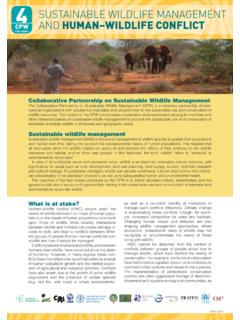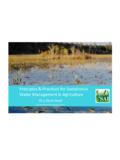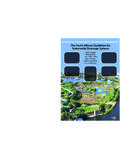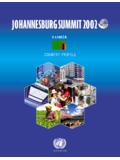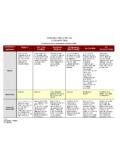Transcription of Building a common vision for sustainable food and ...
1 Building a common vision for sustainable food and agriculture PRINCIPLES AND APPROACHES. Building a common vision for sustainable food and agriculture PRINCIPLES AND APPROACHES. food AND agriculture ORGANIZATION OF THE UNITED NATIONS. Rome, 2014. The designations employed and the presentation of material in this information product do not imply the expression of any opinion whatsoever on the part of the food and agriculture Organization of the United Nations (FAO) concerning the legal or development status of any country, territory, city or area or of its authorities, or concerning the delimitation of its frontiers or boundaries.
2 The mention of specific companies or products of manufacturers, whether or not these have been patented, does not imply that these have been endorsed or recommended by FAO in preference to others of a similar nature that are not mentioned. ISBN 978-92-5-108471-7 (print). E-ISBN 978-92-5-108472-4 (PDF). FAO, 2014. FAO encourages the use, reproduction and dissemination of material in this information product. Except where otherwise indicated, material may be copied, downloaded and printed for private study, research and teaching purposes, or for use in non-commercial products or services, provided that appropriate acknowledgement of FAO as the source and copyright holder is given and that FAO's endorsement of users' views, products or services is not implied in any way.
3 All requests for translation and adaptation rights, and for resale and other commercial use rights should be made via or addressed to FAO information products are available on the FAO website ( ). and can be purchased through FAO. /Am i Vita le Table of contents Foreword 4. About this document 6. An unprecedented confluence of pressures 8. Poverty, inequalities, hunger and malnutrition 9. Inadequate diets and unsustainable consumption patterns 9. Land scarcity, degradation and soil depletion 9. Water scarcity and pollution 10. Loss of living resources and biodiversity 10. Climate change 10. Stagnation in agricultural research 11.
4 A vision for sustainable food and agriculture 12. A conceptual model 12. Interactions and trade-offs 13. Cross-sectoral integration and synergies 15. Key principles for sustainability in food and agriculture 18. Principle 1. Improving efficiency in the use of resources is crucial to sustainable agriculture 20. Principle 2. Sustainability requires direct action to conserve, protect and enhance natural resources 23. Principle 3. agriculture that fails to protect and improve rural livelihoods, equity and social well-being is unsustainable 26. Principle 4. Enhanced resilience of people, communities and ecosystems is key to sustainable agriculture 28.
5 Principle 5. sustainable food and agriculture requires responsible and effective governance mechanisms 30. The transition to sustainable food and agriculture 32. Four areas of action to ensure practice change 32. Four pillars of implementation 34. FAO support to Member Countries 36. Annex. FAO's sustainability frameworks and approaches 40. Cross-sectoral frameworks and approaches 40. Sectoral frameworks and approaches 44. References 48. 3. Foreword In 2012, the Rio+20 Conference called for enhancing food security and nutrition and a more sustainable agriculture , initiated the formulation of sustainable Devel- opment Goals (SDGs) that would be integrated in the UN's Post-2015 Development Agenda (United Nations, 2012a), and launched the Zero Hunger Challenge.
6 Mean- while, United Nations organizations and agencies have adopted a framework for advancing environmental and social sustainability, which calls for a common vision (United Nations, 2012b). FAO's ultimate vision is that of a world free from hunger and malnutrition, where food and agriculture contribute to improving the living standards of all, especially the poorest, in an economically, socially and environmentally sustainable manner . To focus action toward its global goals of food security, elimination of poverty, and sustainable management and utilization of natural resources, FAO has set itself five Strategic Objectives.
7 Through its Strategic Objective 2, FAO assists its Member Countries in identifying and implementing policies, strategies and technologies that contribute to sustainable and enhanced provision of products and services from ag- riculture, forestry and fisheries. FAO/Giuseppe Bizzarri 4. For several decades, FAO has been at the forefront of work towards sustaina- ble agriculture . It has taken the lead in defining concepts and promoting interna- tional treaties, policies, strategies and programmes for sustainable development in food and agriculture . FAO and its Member Countries have made significant pro- gress in enhancing agricultural productivity and sustainability at sub-sector level.
8 They have developed approaches and frameworks at sub-sector level, such as the Ecosystem Approach to Fisheries and Aquaculture, Save and Grow , the framework programme for sustainable crop production intensification, the Global Agenda for sustainable Livestock, sustainable Forest Management, the Global Soil Partnership, Climate-Smart agriculture , Coping with Water Scarcity, adopted to varying degrees by countries. It is now time to take advantage of the wealth of knowledge and experience acquired through these programmes to develop a common vision and an integrat- ed approach to sustainability across agriculture , forestry and fisheries.
9 This unified perspective valid across all agricultural sectors and taking into account social, eco- nomic and environmental considerations will ensure the effectiveness of action on the ground. Such a perspective must be underpinned by knowledge based on the best available science, and adaptation at community and country levels to ensure local relevance and applicability. This vision , and the approach needed to implement it, are presented in this document, aimed at creating a basis for discussion and dia- logue on the way forward. Maria Helena Semedo Deputy Director-General Coordinator for Natural Resources 5.
10 About this document Over the coming 35 years, agriculture will face an unprecedented confluence of pressures, including a 30 percent increase in the global population, intensifying competition for increasingly scarce land, water and energy resources, and the ex- istential threat of climate change. To provide for a population projected to reach billion in 2050 and support changing dietary patterns, estimates are that food production will need to increase from the current billion tonnes to almost billion tonnes a year. Achieving that level of production from an already seriously depleted natural resource base will be impossible without profound changes in our food and agriculture systems.










